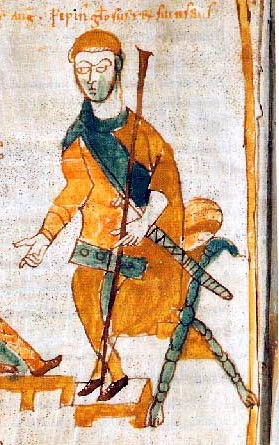|
Cernida
The cernide or cernida (also known as the cranide in Dalmatia) were territorial armies of the Veneto and Istria Istria ( ; Croatian language, Croatian and Slovene language, Slovene: ; ist, Eîstria; Istro-Romanian language, Istro-Romanian, Italian language, Italian and Venetian language, Venetian: ; formerly in Latin and in Ancient Greek) is the larges ... that annually received some military training. The name ''cernida'' derives from the fact that the one or two young men were chosen (cf. it, cernere 'to choose, select') for every ten from among the young men resident in these areas.Tratto da: Lino Ertani. La Valle Camonica attraverso la storia. Esine, Tipolitografia Valgrigna, 1996. 168 These units could thus be mobilized quickly, unlike the army, which was slower to recruit and slower moving. They were formed of soldiers on annual service, with an obligation to gather for brief training periods four times a year, and accounted in total for about 30,000 men. Notes {{ref ... [...More Info...] [...Related Items...] OR: [Wikipedia] [Google] [Baidu] |
Dalmatia
Dalmatia (; hr, Dalmacija ; it, Dalmazia; see #Name, names in other languages) is one of the four historical region, historical regions of Croatia, alongside Croatia proper, Slavonia, and Istria. Dalmatia is a narrow belt of the east shore of the Adriatic Sea, stretching from the island of Rab in the north to the Bay of Kotor in the south. The Dalmatian Hinterland ranges in width from fifty kilometres in the north, to just a few kilometres in the south; it is mostly covered by the rugged Dinaric Alps. List of islands of Croatia, Seventy-nine islands (and about 500 islets) run parallel to the coast, the largest (in Dalmatia) being Brač, Pag (island), Pag, and Hvar. The largest city is Split, Croatia, Split, followed by Zadar and Šibenik. The name of the region stems from an Illyrians, Illyrian tribe called the Dalmatae, who lived in the area in classical antiquity. Later it became a Dalmatia (Roman province), Roman province, and as result a Romance languages, Romance culture ... [...More Info...] [...Related Items...] OR: [Wikipedia] [Google] [Baidu] |
Veneto
Veneto (, ; vec, Vèneto ) or Venetia is one of the 20 regions of Italy. Its population is about five million, ranking fourth in Italy. The region's capital is Venice while the biggest city is Verona. Veneto was part of the Roman Empire until the 5th century AD. Later, after a Feudalism, feudal period, it was part of the Republic of Venice until 1797. Venice ruled for centuries over one of the largest and richest maritime republics and trade empires in the world. After the Napoleonic Wars and the Congress of Vienna, the Republic was combined with Lombardy and annexed to the Austrian Empire as the Kingdom of Lombardy–Venetia, until that was Italian unification, merged with the Kingdom of Italy in 1866, as a result of the Third Italian War of Independence. Besides Italian language, Italian, most inhabitants also speak Venetian language, Venetian. Since 1971, the Statute of Veneto has referred to the region's citizens as "the Venetian people". Article 1 defines Veneto as an " ... [...More Info...] [...Related Items...] OR: [Wikipedia] [Google] [Baidu] |
Istria
Istria ( ; Croatian language, Croatian and Slovene language, Slovene: ; ist, Eîstria; Istro-Romanian language, Istro-Romanian, Italian language, Italian and Venetian language, Venetian: ; formerly in Latin and in Ancient Greek) is the largest peninsula within the Adriatic Sea. The peninsula is located at the head of the Adriatic between the Gulf of Trieste and the Kvarner Gulf. It is shared by three countries: Croatia, Slovenia, and Italy.Marcel Cornis-Pope, John Neubauer''History of the literary cultures of East-Central Europe: junctures and disjunctures in the 19th And 20th Centuries'' John Benjamins Publishing Co. (2006), Alan John Day, Roger East, Richard Thomas''A political and economic dictionary of Eastern Europe'' Routledge, 1sr ed. (2002), Croatia encapsulates most of the Istrian peninsula with its Istria County. Geography The geographical features of Istria include the Učka/Monte Maggiore mountain range, which is the highest portion of the Ćićarija/Cicceria ... [...More Info...] [...Related Items...] OR: [Wikipedia] [Google] [Baidu] |
Military History Of The Republic Of Venice
The military history of the Republic of Venice started shortly after its founding, spanning a period from the 9th century until the Republic's fall in the 18th century. Military conflict between Venice and Italy began in the early 9th century with the intervention of Charlemagne's son Pepin of Italy, King Pepin of Italy into Venice, which resulted in a failed six-month siege. Venice first became a major military power in the 13th century during the Fourth Crusade, where Venetian troops participated in the successful siege and conquest of Constantinople, gaining vast territories and other war spoils. Later in the century, Venice commenced a series of wars with the Republic of Genoa and a number of its allies for dominance in the Mediterranean Sea. With the rise of the Ottoman Empire, the Republic lost its territories in the east as Cyprus and Venetian strongholds in Morea were occupied; at the same time, the rise of the Visconti of Milan drew Venice into the condottiere warfare of It ... [...More Info...] [...Related Items...] OR: [Wikipedia] [Google] [Baidu] |

